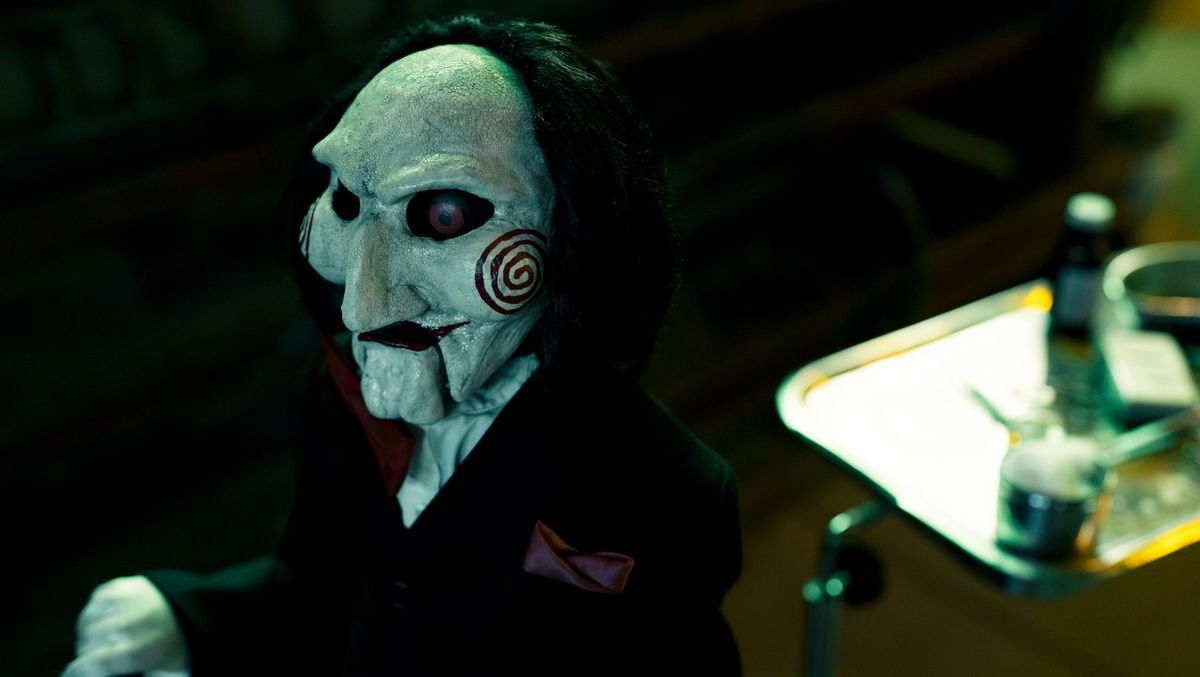‘Saw X’ Restores the Franchise to Its Gruesome Glory

To suggest that Saw X gets the franchise back on track might seem antithetical to a series that frequently operates off the rails. But after two failed reboot attempts, Lionsgate has successfully corrected course with Saw X, a midquel set between the events of the first and second Saw movies—which is exactly how they get away with reviving vigilante engineer John Kramer (Tobin Bell) and his protege Amanda (Shawnee Smith). The film’s prequel setting is a shrewd business calculation, too: Saw X will attract the franchise faithful as well as those who have only seen the first Saw, and don’t exactly need to bother brushing up on the series’ unwieldy lore.
There’s simply no way to talk about Saw X without acknowledging that John Kramer, a.k.a. Jigsaw, died several films back. The franchise arguably hobbled itself by killing off its main antagonist and has gone to increasingly convoluted lengths to continue the series—to varying degrees of success—ever since. After going out with a big, gooey bang in Saw 3D (a.k.a. Saw: The Final Chapter), the series returned in 2017 with the cheapy Jigsaw, a forgettable entry that could easily be confused for a Syfy TV sequel. In 2021, Chris Rock and Samuel L. Jackson headlined Spiral (sorry, Spiral: From the Book of Saw), an ACAB riff on the concept which posits a horrific idea no one had ever thought to consider: what if the cops were actually … bad?
In hindsight—and given the absolutely ridiculous mid-credits scene in Saw X—the franchise really has been too cop-friendly, lest you forget Jigsaw’s underwhelming collabs with Detective Hoffman (Costas Mandylor). But we’ll get back to that in a moment.
The plot of Saw X returns the series to its preoccupations with healthcare and corporate greed. Kramer has a serious case of brain cancer and only a few months to live, at best. But then he runs into a member of his cancer support group, who claims to have been cured by Dr. Pederson, a brilliant man operating outside the strict guidelines and capitalist ideologies of the American healthcare system and the pharmaceutical industry. He directs Kramer to a website, which is how our favorite creepy civil engineer encounters the good doctor’s daughter, Cecilia Pederson (Synnøve Macody Lund), who invites Kramer down to Mexico for a revolutionary treatment.
The first act of the film plays like an extended prologue, and one that lacks any real momentum. With the exception of a grotesquely hilarious interlude in which Kramer daydreams about putting a hospital orderly with sticky fingers through one of his little games, the first 30 minutes of Saw X are mystifying. John Kramer goes to Mexico, where he’s roughly apprehended by masked locals that Pederson sent to scare off any potential interlopers. He stays in a remote villa and befriends a little boy named Carlos, helping the kid fix the busted wheel on his bicycle. Kramer encounters the meek Gabriela (Renata Vaca) who speaks highly of Cecilia and how she saved Gabriela’s family. He undergoes brain surgery and recovers in a nice hotel room back in the city. Everything’s coming up Jigsaw until Saw X deals its first reveal: Jigsaw got got; the surgery was a fake, and Cecilia is scamming cancer patients (the financial angle isn’t immediately clear, lending some confusion to this reveal).
With the help of Amanda, Kramer kidnaps everyone involved in the con and sets about testing them with a series of gruesome games. It seems that Cecilia’s predations are limitless, and everyone involved in the scam is a victim to some degree. Gabriela is a drug addict like Amanda, which sets up an interesting subplot that ties nicely into her franchise arc; another woman is a sex worker who is rescued (???) from a sexual assault when Amanda kidnaps her for the big game; there’s also an employee from a vet hospital who sells drugs to Gabriela. It’s all connected, man. Though Amanda occasionally suggests that some of those involved were merely acting out of desperation to survive their own circumstances, Kramer is having none of it. These people made their choice, and he’s all too happy to give them a second chance—to hell with the optics.

Saw X is directed and edited by Kevin Greutert, a franchise vet who edited six of the previous films and directed the sixth and seventh installments. Greutert’s involvement is readily apparent, from the familiar aesthetic (it looks like it was shot through a rusty Mason jar that could be filled with either Mountain Dew or urine) to the classic Saw structure and the efficient editing. The guy knows how to cut together a gruesome death, but more importantly, he knows that the only thing more upsetting than watching someone mutilate themselves is putting other people in the room with them and forcing us to watch their horrified reactions.
Despite Kramer’s warped sense of morality, there is no great lesson to be learned or pleasure to be derived from his macabre enactments of justice. Everyone and everything is just bad and the whole situation is deeply unpleasant. That’s not to say that Saw X isn’t entertaining; it is, in the very particular way that these movies can be. In the greater Saw rankings, I’d put it up there with the second and sixth films—two of the better entries in the franchise. It has everything you want from a solid Saw sequel: brilliant and brutal traps, a game involving multiple players, and a deep resentment of the capitalist machinery that keeps us simultaneously oppressed by and dependent upon the turning of its wheels (life is the real trap, am I right???). There’s also a classic late third act reveal, when we learn that Kramer and Amanda have constructed a hidden “bonus” game of sorts, accompanied by an awesome needle drop of the Saw theme.
It didn’t dawn on me until the final shot of Saw X, but the franchise actually has a fair amount in common with the Fast and the Furious series. It’s the only other instance I can think of where a franchise has become so outlandish that it hardly resembles the original film. Both series have comparatively humble beginnings: Saw is a simple mystery thriller largely set in one room, and much of the gore and violence is implied or suggested rather than depicted; The Fast and the Furious is a Point Break riff about a cop who goes too deep undercover as a street racer and winds up befriending Vin Diesel. As with the Fast series, the setpieces in the Saw franchise become more elaborate with each successive sequel and the plot is increasingly convoluted with retcons. The worst Fast sequels reveal that some character has a relative we didn’t know about who is actually important to the overall plot in some ridiculous way. The same is true of Saw; the worst sequels reveal that Jigsaw had an accomplice we didn’t know about and they’ve been pulling the strings.
Ultimately, both franchises are about found family. The final shot in Saw X seals it. I just wish the mid-credits scene didn’t work so hard to undercut this blissful moment of absurdity.
(featured image: Lionsgate Films)
Have a tip we should know? [email protected]
